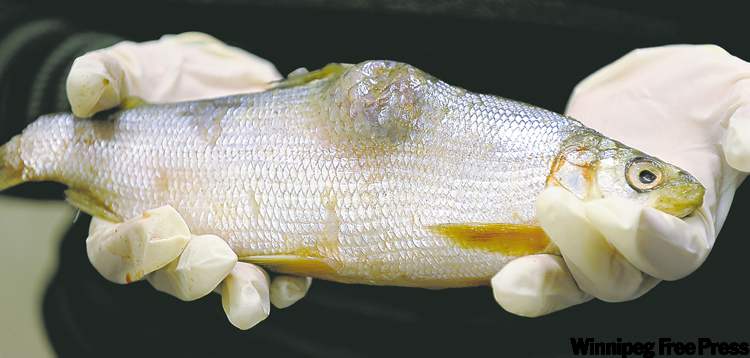Letter to PM demands study of deformed fish near oilsands
Advertisement
Read this article for free:
or
Already have an account? Log in here »
To continue reading, please subscribe:
Monthly Digital Subscription
$0 for the first 4 weeks*
- Enjoy unlimited reading on winnipegfreepress.com
- Read the E-Edition, our digital replica newspaper
- Access News Break, our award-winning app
- Play interactive puzzles
*No charge for 4 weeks then price increases to the regular rate of $19.00 plus GST every four weeks. Offer available to new and qualified returning subscribers only. Cancel any time.
Monthly Digital Subscription
$4.75/week*
- Enjoy unlimited reading on winnipegfreepress.com
- Read the E-Edition, our digital replica newspaper
- Access News Break, our award-winning app
- Play interactive puzzles
*Billed as $19 plus GST every four weeks. Cancel any time.
To continue reading, please subscribe:
Add Free Press access to your Brandon Sun subscription for only an additional
$1 for the first 4 weeks*
*Your next subscription payment will increase by $1.00 and you will be charged $16.99 plus GST for four weeks. After four weeks, your payment will increase to $23.99 plus GST every four weeks.
Read unlimited articles for free today:
or
Already have an account? Log in here »
Hey there, time traveller!
This article was published 17/09/2010 (5549 days ago), so information in it may no longer be current.
EDMONTON — The fish are hard to look at.
One whitefish has a golfball-sized tumour bulging from its side. Another is simply missing part of its spine, its tail growing from a stumpy rear end.
One has no snout. Another is coloured a lurid red instead of a healthy cream. Others are covered with lesions and still others are bent and crooked from deformed vertebrae.

All were taken from Lake Athabasca, downstream from the oilsands in northern Alberta, and were on display Thursday. All are reasons, says a group of scientists and aboriginals, for the federal government to conduct an independent study on what’s happening to the Athabasca River and its watershed after decades of industry expansion.
“A lot of people are afraid to eat fish from the lake,” said Robert Grandjambe of Fort Chipewyan, which is also downstream of the oilsands. “It’s time we had a proper monitoring study done.”
Prominent scientists, two area doctors, five past and present First Nations leaders, a local member of the legislature, the mayor of the Wood Buffalo municipality that includes Fort McMurray, and other area residents all support a letter requesting such a study that was sent to Prime Minister Stephen Harper on Thursday.
The fish aren’t part of any formal scientific survey. But local anglers say the number of such deformed and disturbing catches is growing.
“I never even saw deformed fish in my younger days,” said Grandjambe.
Also growing is the number of studies that link the oilsands industry and increasing levels of contaminants.
“I’m hoping that the prime minister will listen and some of the other politicians involved will say, ‘This data is convincing enough,’ ” said University of Alberta biologist David Schindler, who has published a couple of such studies himself. “We’ve got to get closure on this and bring all of these suggestive studies together in a study that documents… a possible link between fish health and human health.”
Schindler said problems with fish started in the 1980s. “I began to hear complaints about bad taste, suspicious tumours and things like that.”
A 1996 study on northern river basins called for a specific examination on contaminants and health.
“Nothing was ever done.”
In 2007, Environment Canada completed work showing deformities in fish embryos exposed to oilsands.
Schindler said he is “very confident” the fish presented Thursday, all caught by local fishers, demonstrate that the number of deformities is on the rise.
— The Canadian Press

